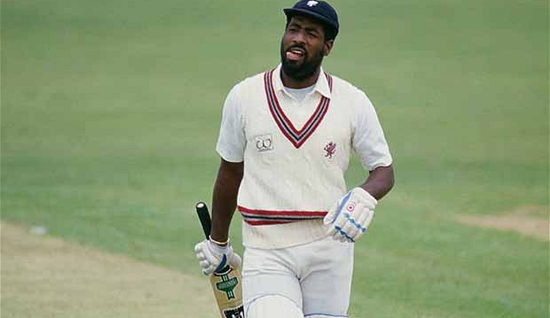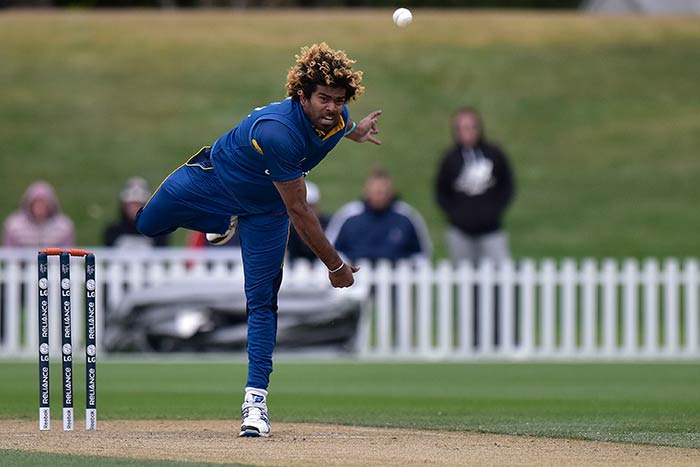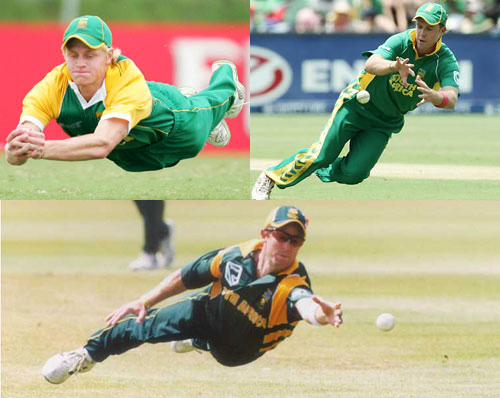This is my first post this year and I thank all of you for the support.For some people cricket is more than just a passion, and so I dedicate this to them.Here is my view on how to approach a 50 overs game. Experts will be analyzing the game closely and interpreting it in a unique manner .Fascinated by it I've made a humble attempt to shed some light on a few critical aspects of the game.
Dividing the innings into three phases
0-15 overs piling
15-40 overs building
40-50 overs finishing
The Piling
A great start and a great finish can be the determine the winner in a limited overs game.
An opener has to negotiate the new ball and adapt to the conditions quickly.Green-tops predominantly favor seam bowlers and more so for the hit the deck kind of bowlers who get the ball to climb at you.Hit the deck bowlers become lethal if they can get the ball to move in the air making it difficult for a batsman to j
udge the ball.Going by the book the best way to play swing I reckon is by playing it late.It gives a batsman the extra bit of time to watch the ball as it moves through the air.It is difficult to counter the occasional out-swinger and the more conventional in-swinger as the ball pitches in the corridor of uncertainty. Push the fielding side by converting singles to doubles and look for scoring options and invent game plans according to the situations.Good partnerships in the beginning are necessary to post a solid total or even while chasing down a mammoth target.
Assessing conditions and bowling according to them comes with experience. Having good field awareness and a definite plan helps the cause.
 Outside the off-stump good length deliveries trouble the best of batsmen.Striking the right line and length can be crucial in building momentum.Moreover it creates pressure on the opening batsmen forcing them to play tentatively inducing edges or causing unsure footwork.Always look to hit the good length on pitches that assist batsmen.With seaming conditions on offer look to pitch the ball right up to the batsmen.When the wicket has got pace and bounce bring your quickest bowlers and hit the deck hard bowling in that region between short of length and good length.Opening with a spinner can be a good option because the ball is hard and easier to grip.Some balls will drift through the air and a bit of lateral movement is expected considering the new ball's shine.
Outside the off-stump good length deliveries trouble the best of batsmen.Striking the right line and length can be crucial in building momentum.Moreover it creates pressure on the opening batsmen forcing them to play tentatively inducing edges or causing unsure footwork.Always look to hit the good length on pitches that assist batsmen.With seaming conditions on offer look to pitch the ball right up to the batsmen.When the wicket has got pace and bounce bring your quickest bowlers and hit the deck hard bowling in that region between short of length and good length.Opening with a spinner can be a good option because the ball is hard and easier to grip.Some balls will drift through the air and a bit of lateral movement is expected considering the new ball's shine.
Most good teams tend to capitalize on this phase and dominate the game from the word go.
The Building
Rotation of strike is the most important aspect along with the odd boundary. Batting in the middle overs is all about constructing an innings. While chasing, this becomes a very crucial period which can potentially change the dimension of the game. I reckon the best approach is to play fearless cricket like Sir Vivian Richards. The natural attacking style is something many batsmen of this generation try and imitate.
Spinners rule the middle overs simply because of their variety and the ability to build pressure. Subtle variations in the air and off the pitch can catch the batsman off-guard.
Once a good platform is created it is easier for the team heading into the last ten overs.
Teams having good slow bowlers who can take the pace of the ball are ideal making the batsmen take risks and create the scoring options.On their day any good spinner can be far more lethal than a world class seam bowler.Wrist spinners can wreak havoc with the extra bit of flight and turn. Seamers can be a handful with the old ball if they can get it to reverse.Using new balls from both ends has it's advantages.“The Kookaburra ball is better to grip and spin when it’s slightly new. You get extra bounce when it lands on the seam.”-Anil Kumble,leg spinner,former India Captain,3rd highest wicket tacker of all time in tests
What about the pacers and reverse swing? Javagal Srinath believes it won’t be too much problem. “They used to change the ball after 34 overs and while the replacement was still an old ball, it’s not the same. You work on the ball, shine it on one side and all that wasn’t there with the replacement ball.
And if you playing in sub continental conditions, you can actually get the ball to reverse after 15-16 overs. So, the two new balls will be a news of joy for pacers. We have to wait and see of course if it hampers reverse swing but overall the advantages far outweigh the disadvantages.”-Javagal Srinath,former India fast bowler,currently ICC Match Referee
The Finishing
Cricket history is full of everlasting heroism in Batting Department. But There are Few batsmen who will remembered for their fantastic batting in the closing moments of the match.One of them was the legendary Sir Vivian Richards
 In a nutshell The man who gave “swagger” new meaning in cricket, Richards was the most destructive batsman of his era, and while there are many with greater records, few could take on, intimidate, and rip to shreds bowling attacks like he did. Also Was The One of best Finishers In the history.
In a nutshell The man who gave “swagger” new meaning in cricket, Richards was the most destructive batsman of his era, and while there are many with greater records, few could take on, intimidate, and rip to shreds bowling attacks like he did. Also Was The One of best Finishers In the history.
Dividing the innings into three phases
0-15 overs piling
15-40 overs building
40-50 overs finishing
The Piling
A great start and a great finish can be the determine the winner in a limited overs game.
An opener has to negotiate the new ball and adapt to the conditions quickly.Green-tops predominantly favor seam bowlers and more so for the hit the deck kind of bowlers who get the ball to climb at you.Hit the deck bowlers become lethal if they can get the ball to move in the air making it difficult for a batsman to j
udge the ball.Going by the book the best way to play swing I reckon is by playing it late.It gives a batsman the extra bit of time to watch the ball as it moves through the air.It is difficult to counter the occasional out-swinger and the more conventional in-swinger as the ball pitches in the corridor of uncertainty. Push the fielding side by converting singles to doubles and look for scoring options and invent game plans according to the situations.Good partnerships in the beginning are necessary to post a solid total or even while chasing down a mammoth target.
Assessing conditions and bowling according to them comes with experience. Having good field awareness and a definite plan helps the cause.
 Outside the off-stump good length deliveries trouble the best of batsmen.Striking the right line and length can be crucial in building momentum.Moreover it creates pressure on the opening batsmen forcing them to play tentatively inducing edges or causing unsure footwork.Always look to hit the good length on pitches that assist batsmen.With seaming conditions on offer look to pitch the ball right up to the batsmen.When the wicket has got pace and bounce bring your quickest bowlers and hit the deck hard bowling in that region between short of length and good length.Opening with a spinner can be a good option because the ball is hard and easier to grip.Some balls will drift through the air and a bit of lateral movement is expected considering the new ball's shine.
Outside the off-stump good length deliveries trouble the best of batsmen.Striking the right line and length can be crucial in building momentum.Moreover it creates pressure on the opening batsmen forcing them to play tentatively inducing edges or causing unsure footwork.Always look to hit the good length on pitches that assist batsmen.With seaming conditions on offer look to pitch the ball right up to the batsmen.When the wicket has got pace and bounce bring your quickest bowlers and hit the deck hard bowling in that region between short of length and good length.Opening with a spinner can be a good option because the ball is hard and easier to grip.Some balls will drift through the air and a bit of lateral movement is expected considering the new ball's shine.Most good teams tend to capitalize on this phase and dominate the game from the word go.
The Building
Rotation of strike is the most important aspect along with the odd boundary. Batting in the middle overs is all about constructing an innings. While chasing, this becomes a very crucial period which can potentially change the dimension of the game. I reckon the best approach is to play fearless cricket like Sir Vivian Richards. The natural attacking style is something many batsmen of this generation try and imitate.
Spinners rule the middle overs simply because of their variety and the ability to build pressure. Subtle variations in the air and off the pitch can catch the batsman off-guard.
Once a good platform is created it is easier for the team heading into the last ten overs.
Teams having good slow bowlers who can take the pace of the ball are ideal making the batsmen take risks and create the scoring options.On their day any good spinner can be far more lethal than a world class seam bowler.Wrist spinners can wreak havoc with the extra bit of flight and turn. Seamers can be a handful with the old ball if they can get it to reverse.Using new balls from both ends has it's advantages.“The Kookaburra ball is better to grip and spin when it’s slightly new. You get extra bounce when it lands on the seam.”-Anil Kumble,leg spinner,former India Captain,3rd highest wicket tacker of all time in tests
What about the pacers and reverse swing? Javagal Srinath believes it won’t be too much problem. “They used to change the ball after 34 overs and while the replacement was still an old ball, it’s not the same. You work on the ball, shine it on one side and all that wasn’t there with the replacement ball.
And if you playing in sub continental conditions, you can actually get the ball to reverse after 15-16 overs. So, the two new balls will be a news of joy for pacers. We have to wait and see of course if it hampers reverse swing but overall the advantages far outweigh the disadvantages.”-Javagal Srinath,former India fast bowler,currently ICC Match Referee
The Finishing
Cricket history is full of everlasting heroism in Batting Department. But There are Few batsmen who will remembered for their fantastic batting in the closing moments of the match.One of them was the legendary Sir Vivian Richards
 In a nutshell The man who gave “swagger” new meaning in cricket, Richards was the most destructive batsman of his era, and while there are many with greater records, few could take on, intimidate, and rip to shreds bowling attacks like he did. Also Was The One of best Finishers In the history.
In a nutshell The man who gave “swagger” new meaning in cricket, Richards was the most destructive batsman of his era, and while there are many with greater records, few could take on, intimidate, and rip to shreds bowling attacks like he did. Also Was The One of best Finishers In the history.
Finishing is about getting the team over the line and players like Ab De Villiers and M S Dhoni are examples of the best finishers in the current generation. While setting targets the 10-20 runs could be the deciding factor. Chasing needs a different approach altogether and someone like MS Dhoni is tailor made for such situations.
Bowling at the Death

Death bowling is an art that can be mastered with experience. The ability to bowl yorkers and vary pace are among the basic skills required during the death overs. Try and restrict the run flow by bowling to their weakness. Variations are key to thriving in these conditions and spinners find it more difficult to hold their own during the death.
Bowling at the Death
- Bowling at the death, as it is often called, requires a great deal of mental strength. It's usually the section of a team's innings when the most runs are scored, so bowlers need to continue believing in their ability even if they are conceding a lot of runs. The payoff for the bowler is that more batters tend to get out in the death overs, so bowlers have better chance of picking up wickets.
- Bowling at the death may be a thankless task for most, but Sri Lanka's Lasith Malinga seems to thrive under the pressure and consistently deliver yorkers. His most famous death bowling exploits came against South Africa at the 2007 World Cup, where he took four wickets in four balls to almost pull off a stunning win for Sri Lanka. Fortunately for the Proteas, Robin Peterson and Charl Langeveldt held their nerve to get their team over the line, and Malinga's efforts became a footnote.

Death bowling is an art that can be mastered with experience. The ability to bowl yorkers and vary pace are among the basic skills required during the death overs. Try and restrict the run flow by bowling to their weakness. Variations are key to thriving in these conditions and spinners find it more difficult to hold their own during the death.





